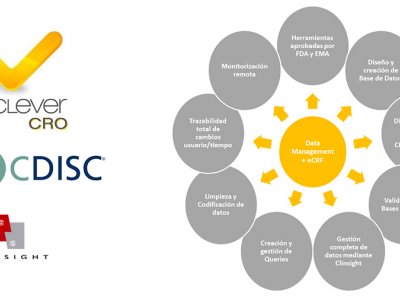Randomized Clinical Trials
14-09-2020Randomized clinical trials (RCTs) are studies in which participants are randomly (randomized) assigned to an experimental group or a control group (see Controlled and Uncontrolled Clinical Trials). Randomization (randomization (USA) or randomisation (UK), guarantees that the doctor or the patient do not know in advance the treatment assignment. The only difference expected in RCTs, between the control groups and the experimental group, is the variable outcome being studied RCTs are considered one of the highest levels of evidence in clinical practice due to their great confidence and robustness in data production.
RCTs are generally used to assess the efficacy or effectiveness of treatments, in terms of:
- Stratified randomization: it is a method that helps to achieve comparison between the study groups for those factors considered relevant. The main objective is to try to avoid that the treatment groups present important differences in the characteristics of the patients. In this type of randomization, you have to carefully decide which patient factors to stratify. This design should not be used in:
RCTs are generally used to assess the efficacy or effectiveness of treatments, in terms of:
- Superiority: to determine if a new treatment is better than a placebo or a standard intervention.
- Non-inferiority: the new treatment is no worse than a placebo or a standard intervention.
- Equivalence: analogous to non-inferiority, but the premise of the new intervention is that it is no better than a placebo or a standard intervention. These studies may look at a comparison between treatment and no treatment or placebo, different treatment strategies, or different doses / intensity of the same treatment.
Advantages of RCTs
- Good randomization can eliminate any population bias.
- They are easier to blind / mask than observational studies.
- The results can be analyzed with familiar statistical tools.
- The populations of participating individuals are clearly identified.
Disadvantages of RCTs
- They are expensive in terms of time and money
- The population that participates is by definition "selected", so it is different from real clinical practice and may not be representative of the whole.
- They are carried out in a clinical trial environment (greater specialization, greater patient control and with more intense results in the visits that are made), which obviously differs from the environment in which the population receives their usual care. Therefore, they cannot be generalized or compared to a general practice setting.
- There may be a loss to follow-up attributed to treatment.
Most Common Methods for Randomization
- Randomization list: allows the researcher to assign the treatment to the patients following the numerical order of a list of numbers created at random, but not knowing at all times the treatment corresponding to that number. To meet this requirement, there are computer programs that generate these types of lists.- Stratified randomization: it is a method that helps to achieve comparison between the study groups for those factors considered relevant. The main objective is to try to avoid that the treatment groups present important differences in the characteristics of the patients. In this type of randomization, you have to carefully decide which patient factors to stratify. This design should not be used in:
- Studies with large numbers of patients in which interim analysis of the data is not possible or of no interest.
- When the necessary means are not available to properly monitor the randomization, which could carry a certain risk of error.
- When it is not certain which characteristics of the patient may influence the response to treatment.




